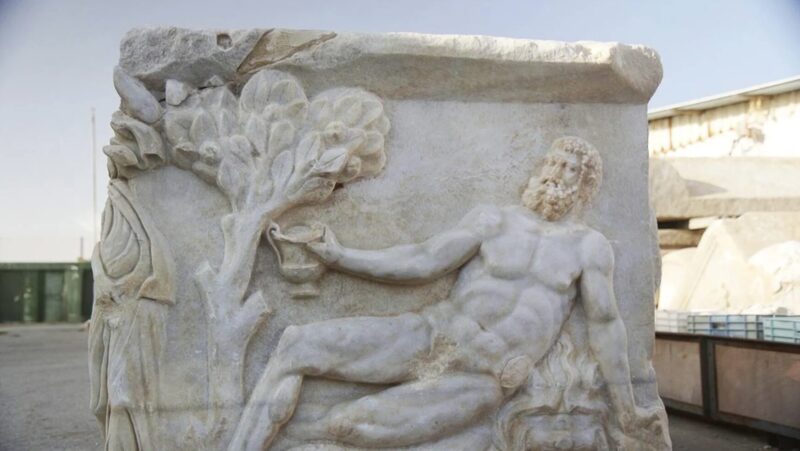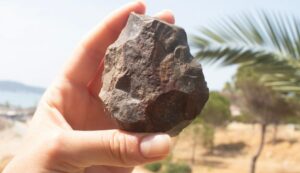It seems that people 1,700 years ago enjoyed the same battles of endurance that you might find today in a country pub. Archaeologists have uncovered a marble sarcophagus from the Roman era in Caesarea, Israel. Haut-relief sculptures on the sarcophagus show a wine-drinking contest between Dionysus, the Greek god of wine, and the legendary Roman hero, Hercules.
A joint team from the Israel Antiquities Authority (IAA) and the Caesarea Development Corporation found the sarcophagus buried beneath a sand dune outside the city’s ancient walls. Excavation leaders Nohar Shahar and Shani Amit described the discovery as something out of a movie.
“We began brushing away the light sand of the dune when the tip of a marble object suddenly emerged,” they recalled. “The whole team gathered around, and as we cleared more sand, we could hardly believe what we were seeing.”
A defeated Hercules
A main panel shows a defeated Hercules clutching a cup and apparently unable to stay upright. Meanwhile, a victorious Dionysus celebrates with an entourage of mythological creatures and revelers.
Researchers believe the scene represents more than a mythological boys’ contest, that it symbolizes the soul’s passage from the physical world to the afterlife.
“The figures are not only celebrating, they are accompanying the dead on their last journey, when drinking and dancing are transformed into a symbol of liberation and transition to life in the next world,” said Shahar.
Shahar also noted that this is the first time archaeologists have found the Dionysus-Hercules wine contest depicted on a burial coffin in the region. Similar scenes appeared in the 2nd and 3rd centuries, but they were typically found in mosaics, not sculpture.

The marble sarcophagus after its preservation. Photo: Shatil Emmanuilov, Israel Antiquities Authority
Although discovered in Israel, the artists likely used marble quarried from northwestern Turkey, since there were no local marble quarries in ancient Israel. Archaeologists think that the piece was created in Turkey, with some final details added after it arrived in Israel. The elaborate design and imported materials make it very clear that a wealthy family that “enjoyed a certain lifestyle” commissioned it “as a fitting reflection of their identity.”






